John and Mary Kormendy: Birding Trip to Eastern India and Kanha National Park Tiger Reserve (May and June 2016)
These are the pictures from a 2016 May + June trip first to Eastern India (Assam, Arunachal Pradesh, and Meghalaya provinces) and then to Kanha National Park Tiger Reserve in Madhya Pradesh, central India. The pictures are posted here chronologically as a travelogue. Jack Poll was our main bird guide in the first part of the trip. Travel Wizard Vinod Goswamy of Babita Tours accompanied us on the whole trip and decisively solved the many logistic and other glitches that can happen in an India trip. We owe much of the success of our trip to Vinod and Jack.
The Eastern India part of the trip was difficult for photography, so many pictures are not very good. Even very bad bird pictures are included, because we want to remember the species that we saw. The Kanha National Park part was more photography-friendly, but there, we concentrated more on seeing tigers in the wild and not so much on birds. Nevertheless, this web site is a record of 000 of the 000 species in total - including 94 life birds for John and 71 for Mary - that we got on this trip. Mary got her 3000th life bird during this trip -- Himalayan cutia (Cutia nipalensis), an iconic bird at elevations of about 2000 m in the Himalayan foothills.
In this web site, scenery and other pictures are interspersed chronologically. For us who were on the trip, a complete travelogue is the best way to remember it. Eventually, I will make a public web site of the best bird pictures.
This web site is not public. It will be under construction for the next few months, as I gradually process pictures and add them. Come back often if you want to keep up with progress.
The pictures are copyrighted and should not be used without permission.
Assam Lowlands and Mismi Hills

We flew from Delhi to Dibrugarh on 2016 May 13 and stayed that night at a nearby tea plantation. The next day was a very long and tiring drive NE to Roing; this included long approaches to and from the burgeoning Brahmaputra River over terrible roads and a roughly 1-hour ferry ride across the river. At Roing, we stayed overnight at Mismi Hill Camp, nicely rustic but not -- we suggest -- to be recommended. Cabin walls were made of woven bamboo with lots of holes. Mosquitoes got in and attacked us mercilessly overnight. We suffered from the aftermath for days.
The drive from Roing to Mayodia Pass with overnight at Mayodia Lodge, nearby, was difficult, but the area is superb for birding once you get past road construction near Roing. The main trouble here is that it rains A LOT. We thought -- mistakenly, as it turns out -- that the monsoon had arrived early. Anyway, cold and rain hampered birding and especially bird photography. But we recommend the area highly for anyone with the necessary stamina. We want to go back ourselves ... a little farther out of the rainy season.
After one night at Mayodia Lodge, we tried to escape the rain by going early (earlier than in our schedule) to Tinsukia and from there (1) twice to Dehing Patkai rain forest (the only lowland rain forest in India) and (2) twice on canoe rides in nearby swamps and rivers. Both were productive, though we were hampered in the rain forest by rain (!) and by elephants. People stringently avoid wild elephants, which have killed unwary tourists. Again, we got good birds but not many good photos. A major exception is the Black-backed dwarf kingfisher -- seeing it was a coup.
At the end of this part of the trip, we took a day-long drive to Tezpur (bottom-left corner of the map) and then continued in the next section up the road past Eagle Nest to Dirang and Sela Pass, then back via the Mandala Road to spend 1 night in Tenga village, three nights at Bompu Camp, and one night at Lama Camp.

Watercock (This is our life bird.)

Yellow-bellied prinia (This is our life bird.)


Black-throated parrotbill (Paradoxornis nipalensis poliotis: Note the brown crown but gray cheeks. This is John's life bird; Mary got hers several days later. Mismi hills.)

Stripe-throated yuhina (Mismi hills; see also later in trip.)

Yellow-throated fulvetta (This is Mary's life bird; John got this bird in 2016. Mismi hills.)

Gray-backed shrike in the rain (It rained A LOT in the Mismi hills.)

Black-backed dwarf-kingfisher (Dehing Patkai Wildlife Sanctuary, the only lowland rain forest in mainland India (Assam). We were told that this was only the second time that this bird -- Ceyx erithaca erithaca, according the Clements 2015 -- has been seen here.)

Black-breasted parrotbill (This is John's life bird.)
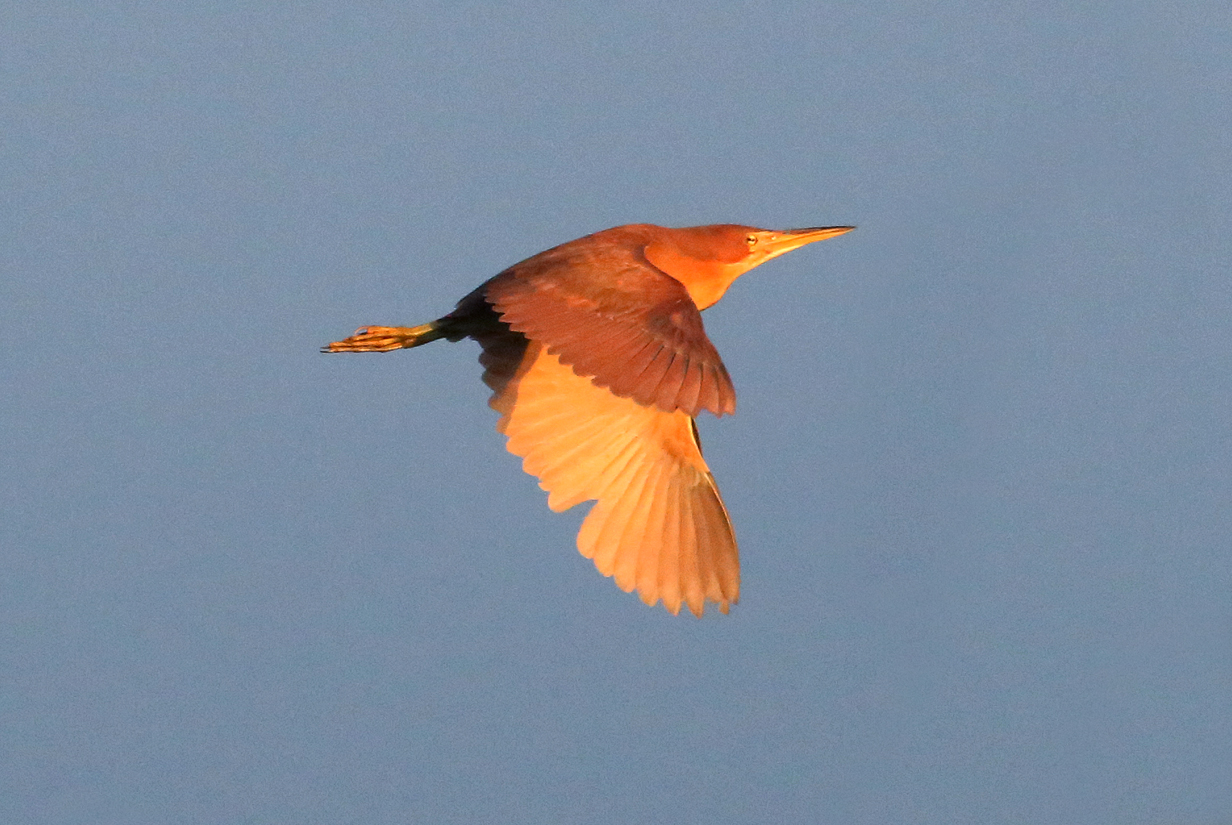
Cinnamon bittern in evening sunlight

Yellow bittern in evening sunlight (This is John's life bird.)

Emerald dove (Dehing Patkai rain forest; we got our life bird in Australia.)

Rufous-throated fulvetta (This is a very bad picture of one of the hardest birds of the trip: We must have spent an hour and a half chasing after two birds that continually moved but stayed hidden in the bushes. John eventually got a perfect -- if brief -- look at the first bird and a bad picture of the second one. From the back, barely a hint of the rufous throat shows.}
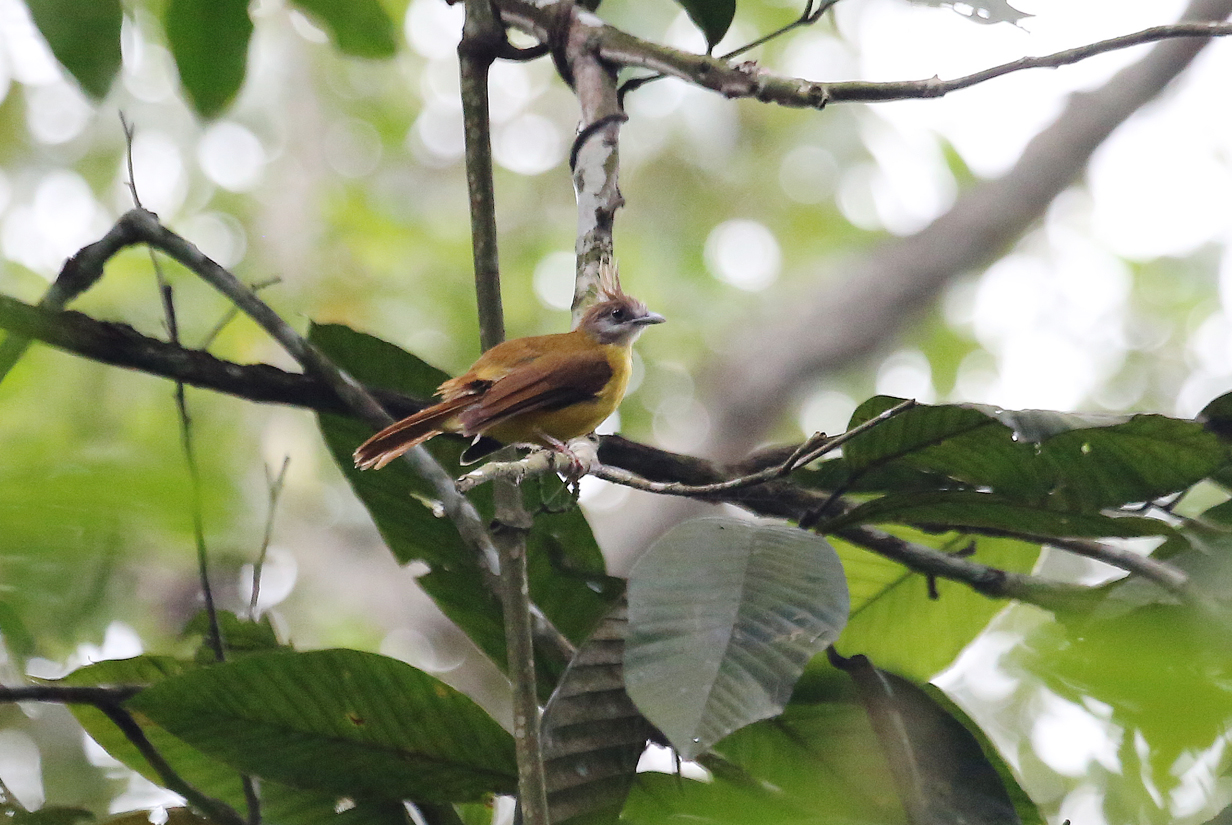
White-throated bulbul (Another poor picture ... but the best that I managed on this trip.}
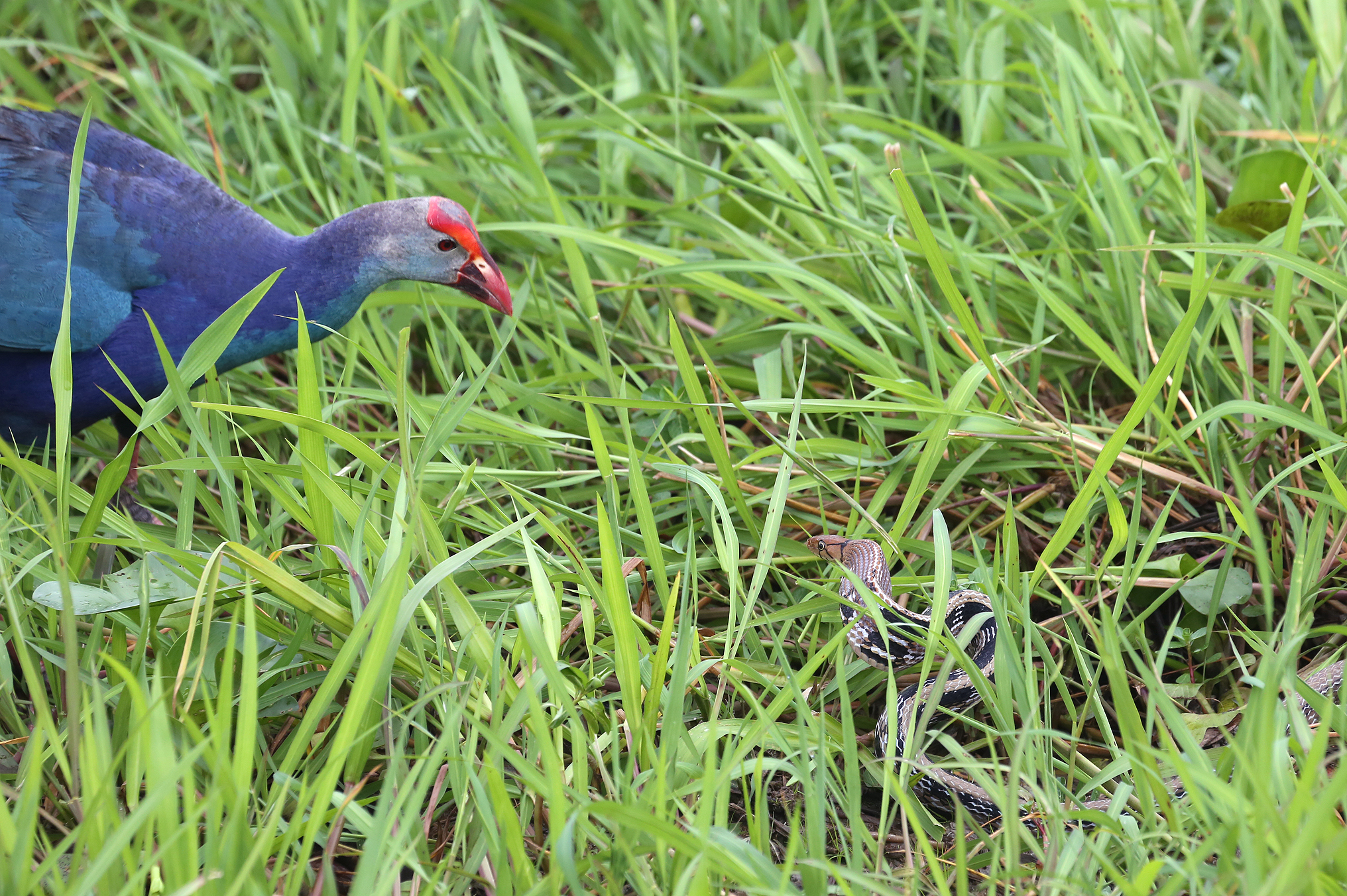
Gray-headed swamphen versus snake (This movie shows a confrontation between three swamphens and the snake; about 30 seconds after the end of the movie, the birds won the war and chased the snake away. Remarkable to watch!)
Sela Pass Road and Mandala Road, Arunachal Pradesh

Collared owlet (This is John's life bird. The collared owlet's "toot tootoot toot" call -- easily imitated -- was frequently more useful than pishing to stir up bird populations.)
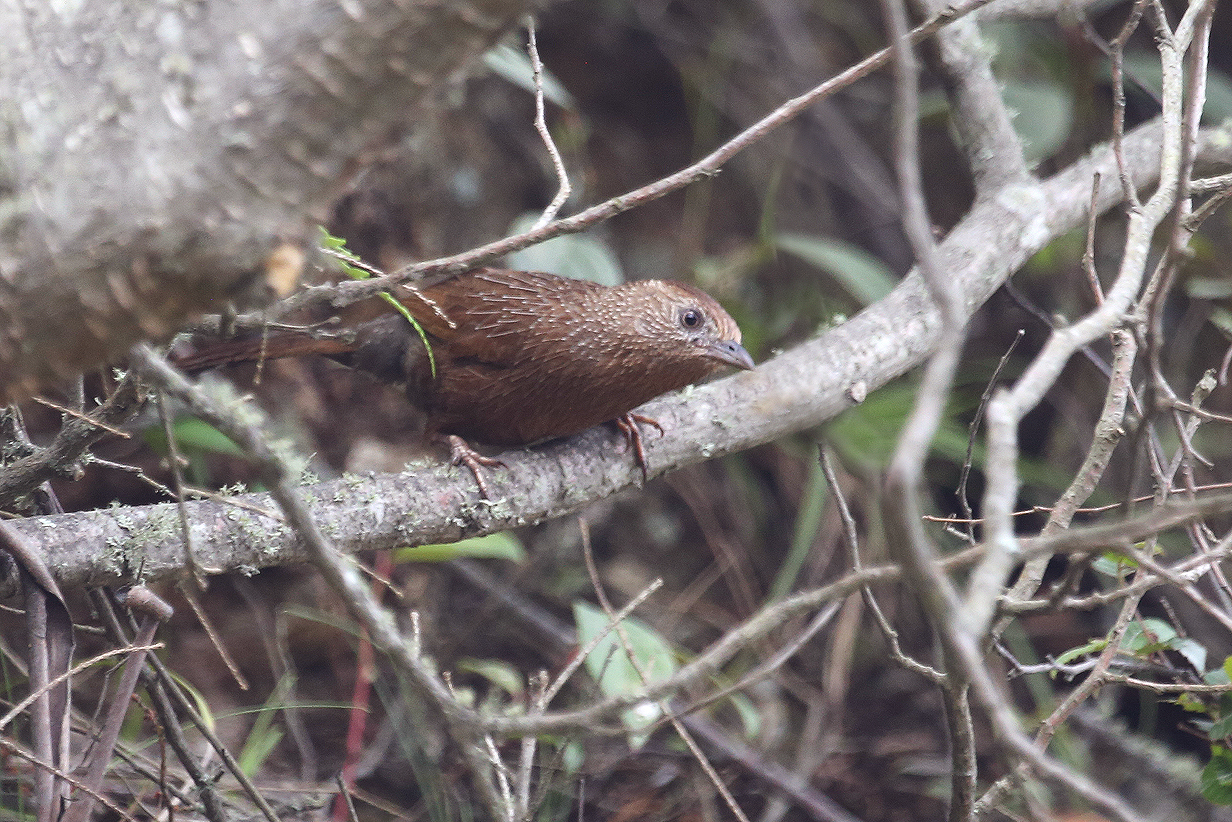
Bhutan laughingthrush (Along the road from Tezpur to Tenga Village)

Chestnut-bellied rock thrush (female)
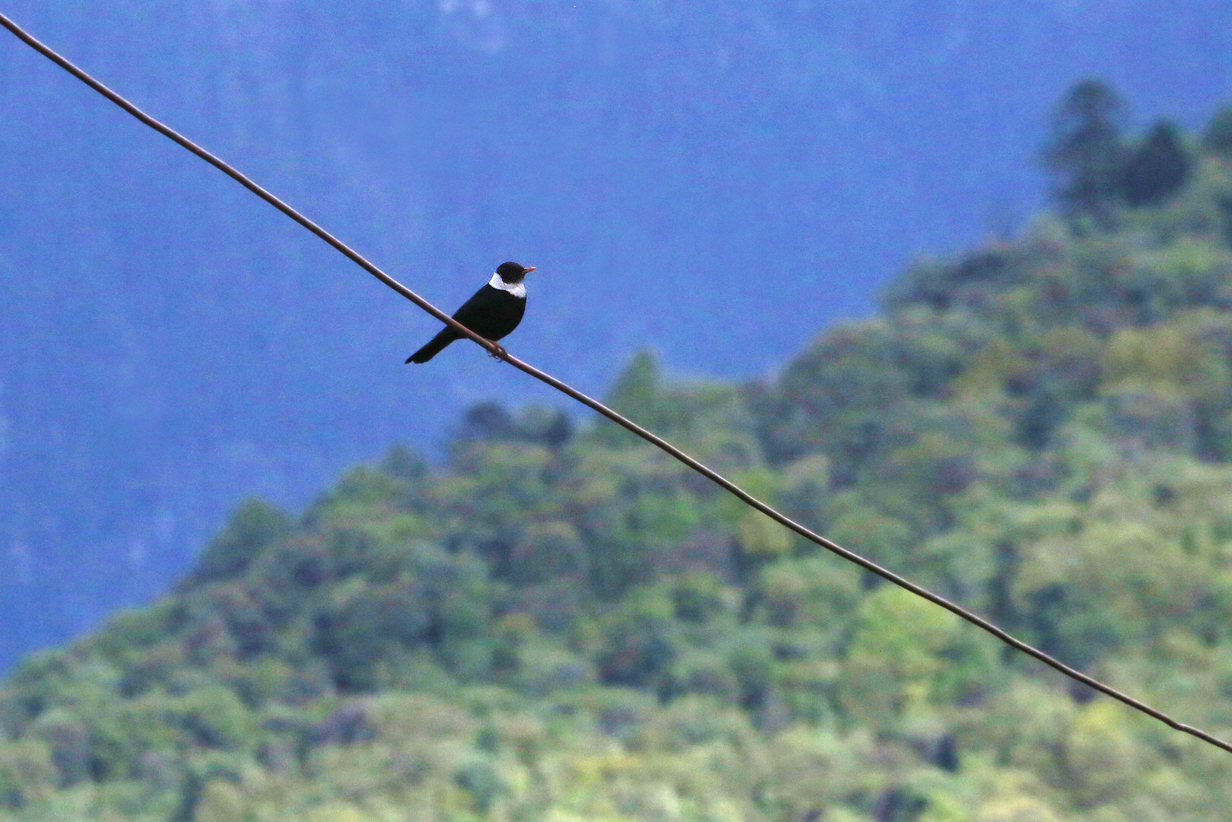
White-collared blackbird (This male is our life bird -- bad picture, marginally rescued)

Gray nightjar (This is our life bird.)
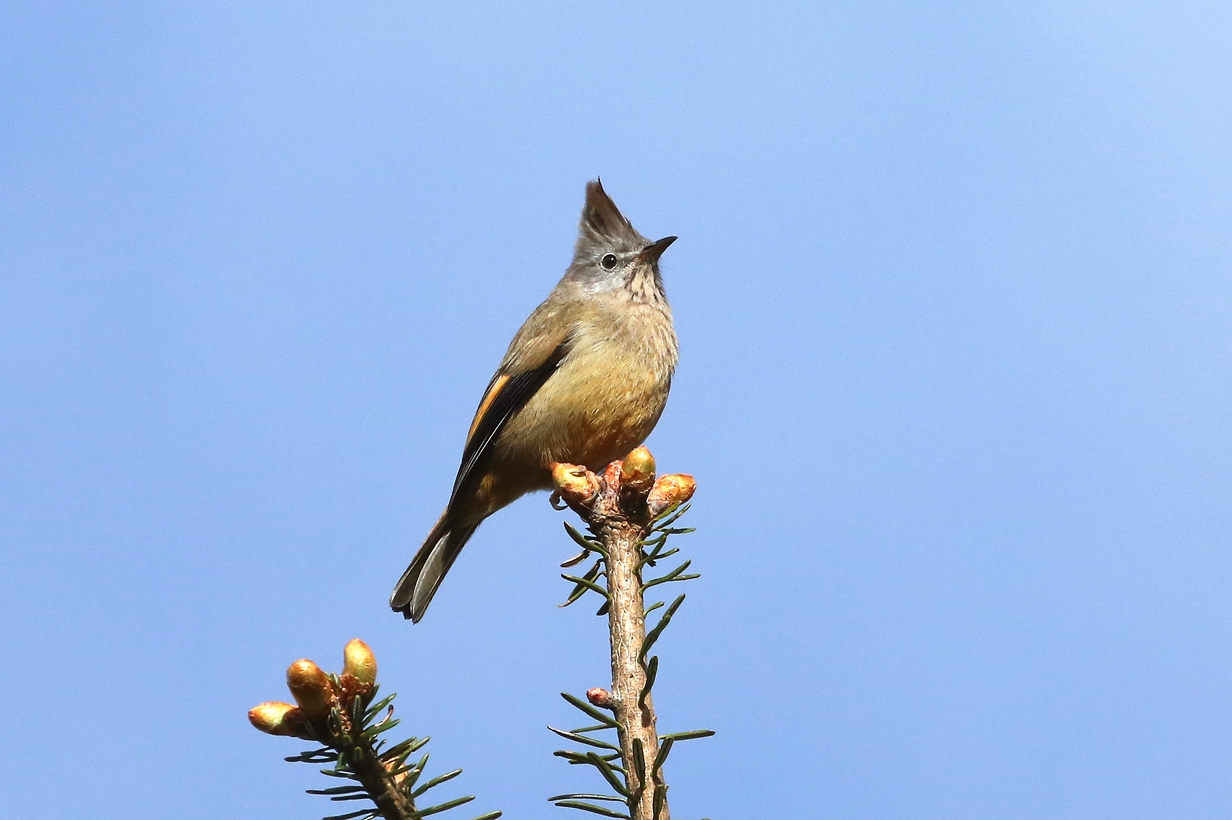
Stripe-throated yuhina (Ubiquitous during NE India trip; see also earlier in trip.)

Dark-rumped rosefinch (At Sela Pass, 4170 m or 13,680 feet elevation. This is our life bird.)

Snow pigeon (Sela Pass: These are John's life birds and are almost certainly from the flock of Mary's life birds.)

Green-tailed sunbird (male)

Mrs. Gould's sunbird (male: on the road to Sela Pass)


Fire-tailed sunbird (Sela Pass)
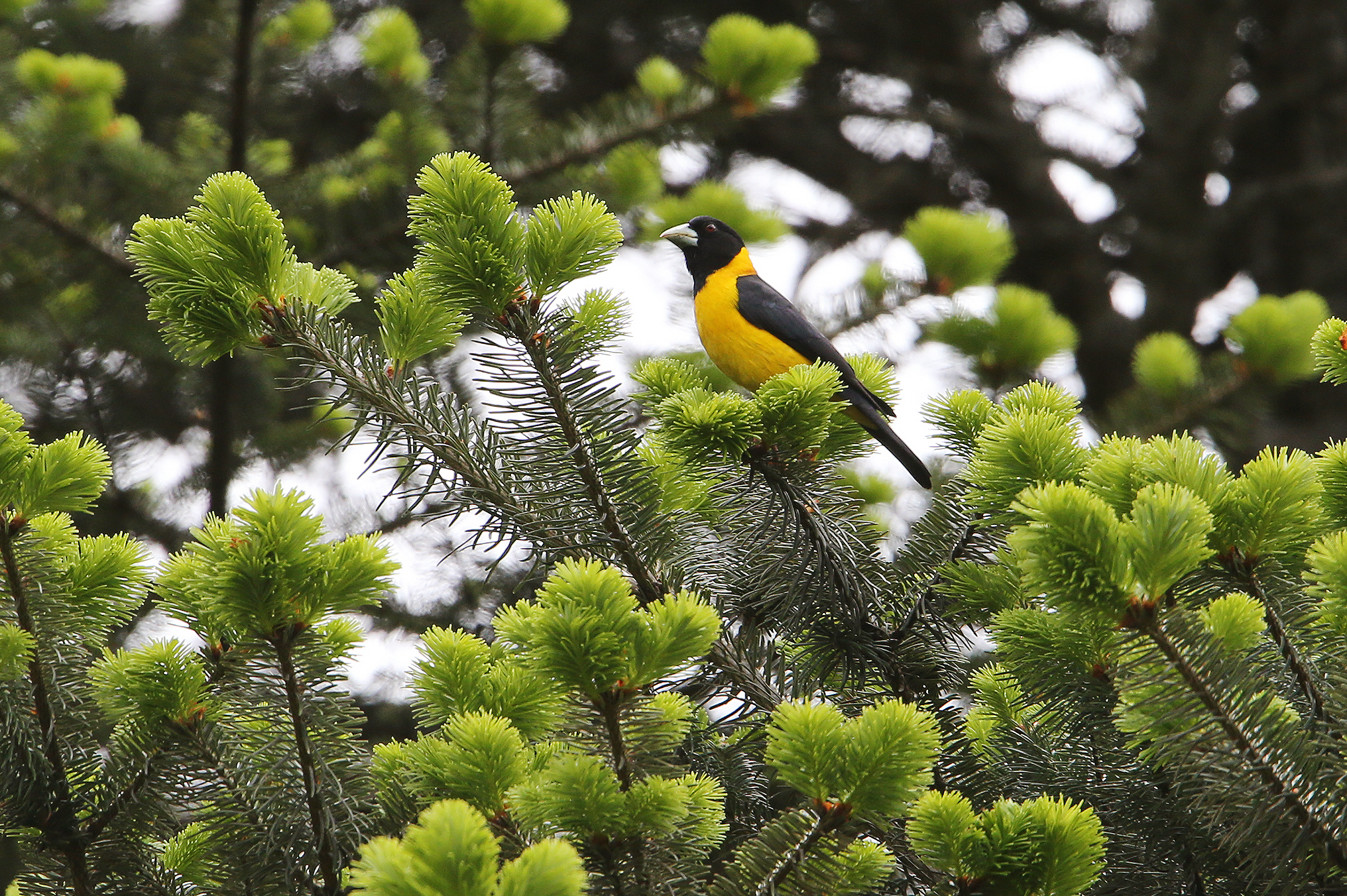
Collared grosbeak (This male is our life bird, seen along the Mandala Road.)


Yellow-billed blue magpie (This is our life bird; Mandala Road.)

Spot-Winged grosbeak (This male and female are John's life birds; out of order -- below Bompu Camp.)

Chestnut-tailed minla

Red-tailed minla

Blue-winged minla

Himalayan cutia (Himalayan cutia -- but not this bird -- is Mary's 3000th life bird.)

Whiskered yuhina (Punk is in!)

Gray bushchat (male)

Yellow-cheeked tit

Verditer flycatcher (There were some seasonal differences beween December 2014 and May 2016: I accidentally photographed but never saw Verditer flycatcher in 2014, but they were extremely common in 2016.)

Russet sparrow
Eagle Nest Wildlife Sanctuary, Arunachal Pradesh

Roughly from here on, after an overnight in Tenga Village (pretty nice new hotel); we were in Eagle Nest Wildlife Sanctuary for 3 nights at Bompu Camp and one night at Lama Camp. Heavy rains have made the road very rough from Lama Camp and especially from Eagle Nest Pass onward. The same remains true below Bompu; we drove somewhat beyond the site of (former) Sessni camp until we ran out of time and were turned around by torrential rain. The end of the passable road is now not far beyond Sessni, going south.

Large hawk-cuckoo (This is our life bird.)

Brownish-flanked bush warbler (This is our life bird. Not exceedingly convincing...)

Scarlet finch (This is our life bird, seen on the "Bugun liochicla side road" on the way up to Lama Camp.)
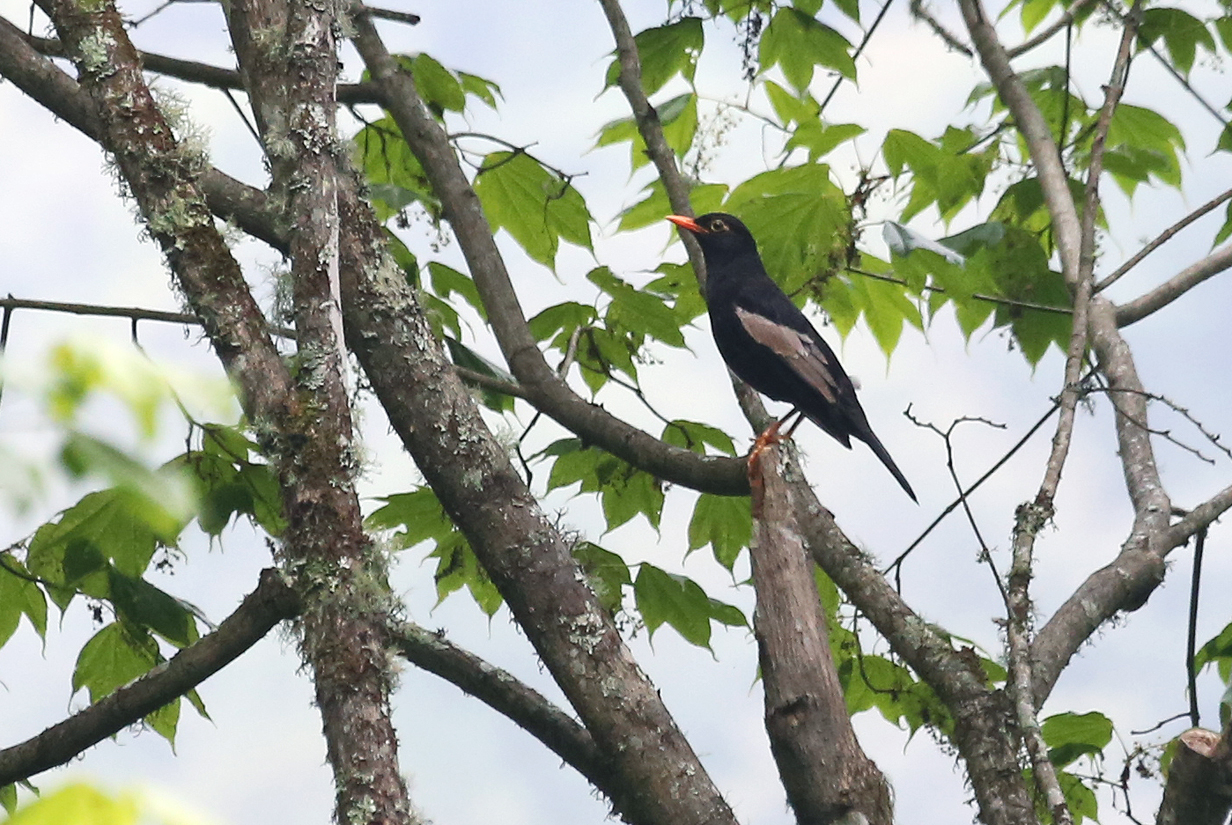
Gray-winged blackbird (This is John's life bird.)

Plain-backed thrush (This is our life bird.)

Spotted laughingthrush (This picture of our life bird is poor in quality but means a lot to us: This is a very difficult bird to see, and we were lucky to see it at Eagle Nest Pass.)

Gray-sided laughingthrush
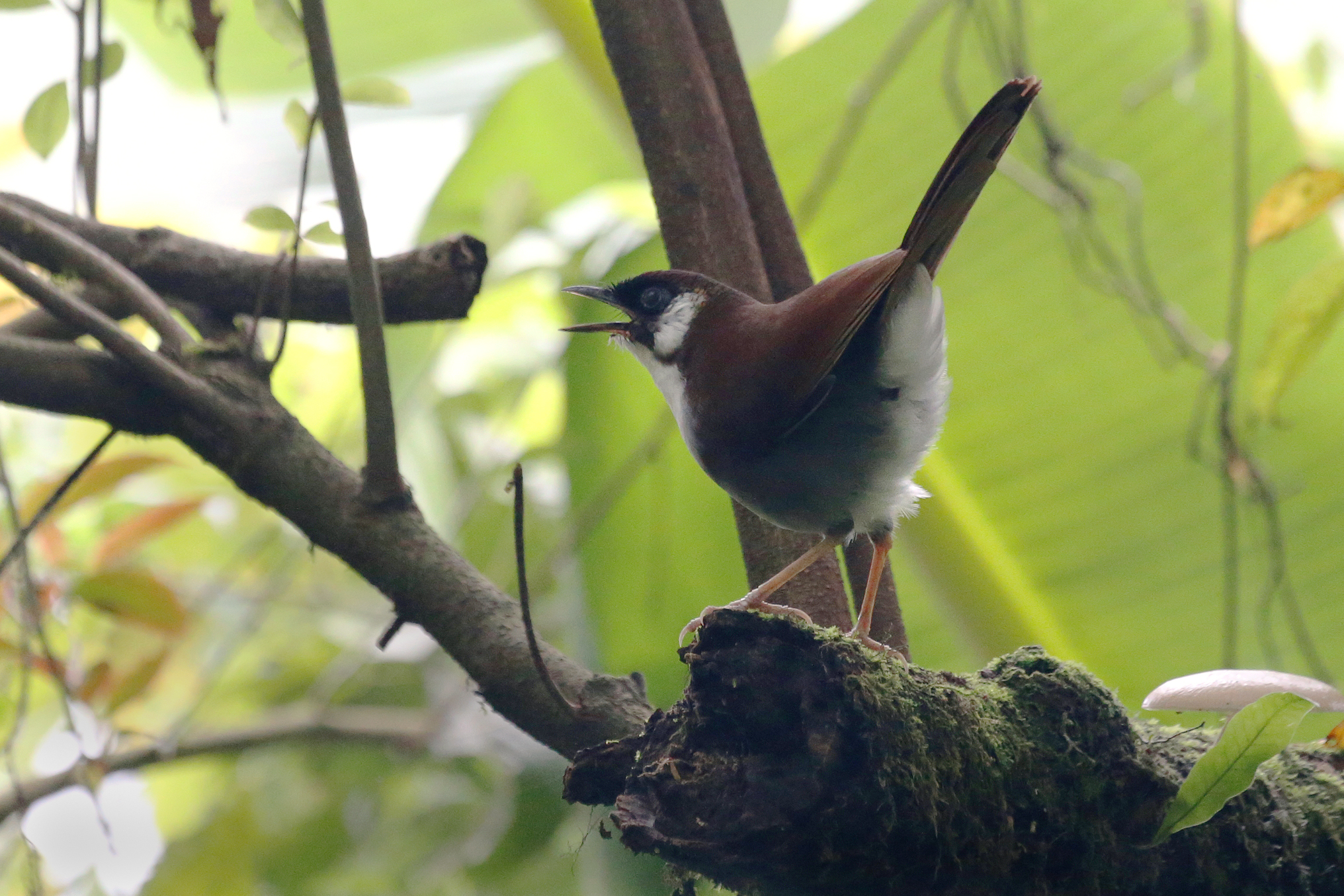
Gray-sided laughingthrush (courtship display)


Chestnut-crowned laughingthrush (This is Mary's life bird; John saw it in 2014. This picture is out of chronological order on Mandala Road.)

With our friend and bird guide Jack Poll at Bompu Camp. Ours is the last tent on the left. Note that Jack and John are wearing leech socks -- necessary so close to the rainy season. We even had hungry leeches -- about half a dozen every day -- on the windows of our vehicle! Final score (despite the socks): John got leeched once; Mary did not.

At Bompu Camp ... in afternoon rain.

Ward's trogon (This is our life bird: Near Bompu Camp.)

Streaked spiderhunter (not very cooperative -- stayed high in the canopy -- below Bompu)
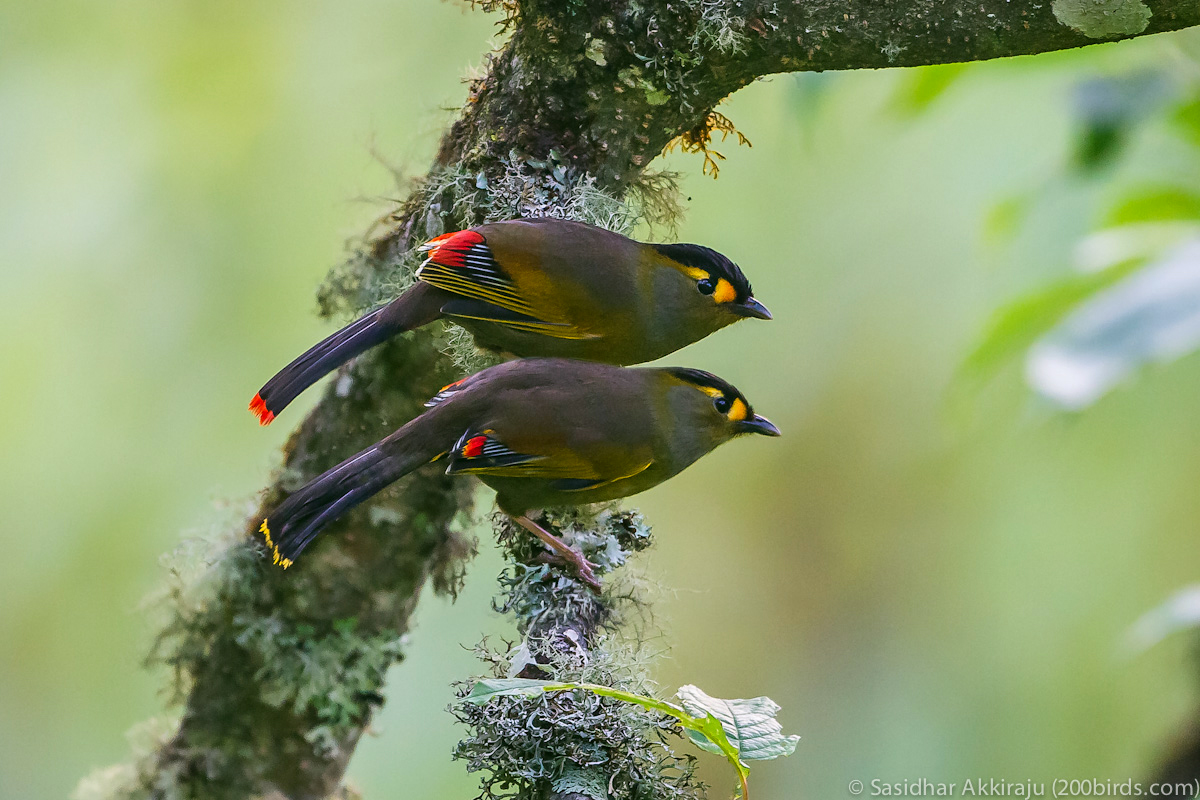
Bugun liocichla: This is NOT my picture; it is the best picture of Bugun liocichla posted at Lama Camp. This bird is so important to the trip that I include a (superb!) picture that I did not take. John and Vinod got good (but distant and brief) looks at Bugun liocichla near a nesting site about 1 km uphill from Bompu camp. The species was formally discovered in 2006 near Lama Camp, and we heard and almost saw a pair of the birds there, along the "Bugun liocichla side road". We were pleased that the range extends at least over the ridge at Eagle Nest pass down to the altitude of Bompu in the south. Wikipedia says that only 3 breeding pairs are known; this would mean that we saw one of them and heard a second. The species is critically endangered, and this area is famous for it. It was a privilege to see such a rare bird ... even though it is extremely shy and hard to see. John also got its relative, Red-faced liocichla, which is similarly hard to see. For John, Bugun liocichla was the "trip bird".

On the way out, we stayed for one night at Lama Camp; ours is the farthest tent (next to the toilets). Dinners are served in the leftmost building, and lunches are served in the building under which Mary was standing when she took this picture. With the help of Vinod's gas heater in both places, we managed to overnight in the tent camps with no great difficulty. In 2014, we commuted about 4 times from Tenga to Lama Camp, so we actually spent a lot more time at Lama Camp then. This time, we concentrated on Bugun Liocichla (which Mary and Jack did not see) and didn't get much that was new.


White-browed piculet (This is our life bird - a bamboo specialist in thick bamboo off the road from Tenga village to Tezpur.)

Silver-eared mesia (Also off the road from Tenga village to Tezpur, but ubiquitous. We never got a good picture.)
Meghalaya, India

Tawny-breasted wren-babbler (This is John's life bird. Even with split-second timing, I barely managed to a photo of face and throat as this elusive skulker flitted between hidden spots in different bushes. Luckily, I got a full binocular view of the complete bird. We got three new wren-babblers on this trip for a total of five species, but this is the closest that I got to photographing any of the new ones. There's a pretty good image of Long-billed wren-babbler in the 2014 trip pictures. )
Kanha National Park

Two Indian scops owls (Otus bakkamoena)

Jungle owlet with lizard
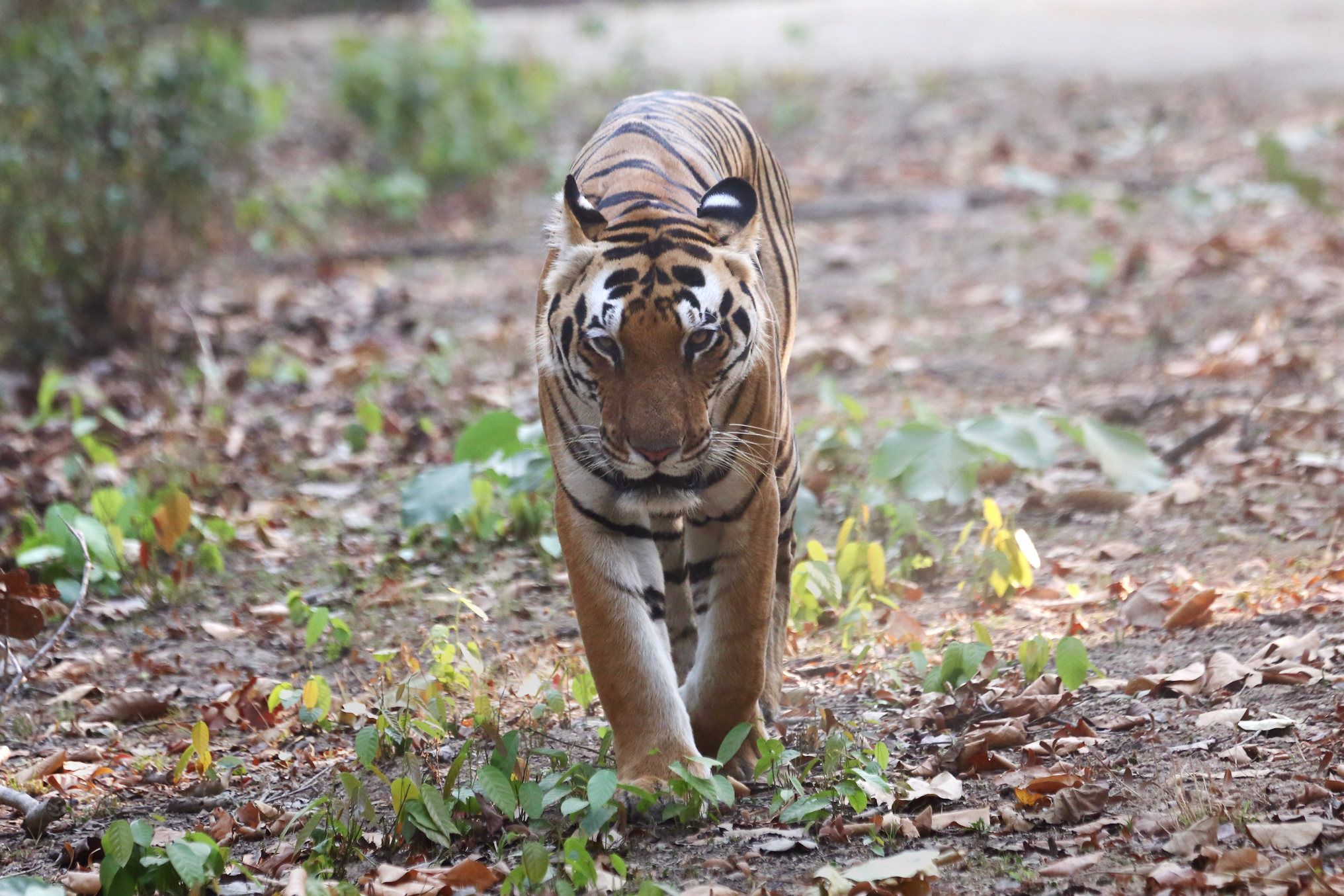
Link7, the dominant male tiger in Kanha National Park.

Kingfisher, the second-ranked, dominant male tiger in Kanha National Park. He is named for a black mark over his right eye that looks a little like a hovering kingfisher. He recently fed well and has a very full belly.

Rat snake tango (For the movie, see this link.)

There is nothing quite so scruffy ... in a curiously dainty way ... as a wet wild boar.

Black Ibis (not quite mature enough to have a complete red cap)
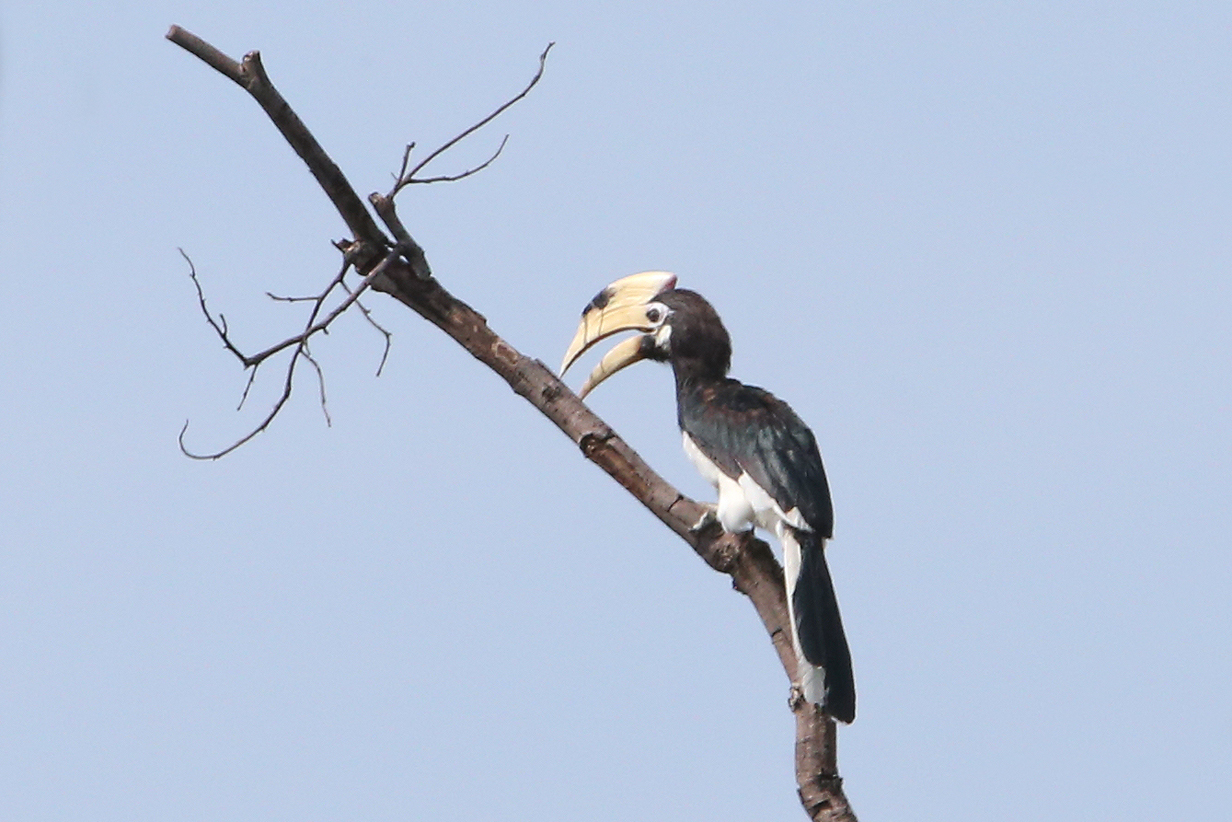
Malabar pied hornbill (This is John's life bird.)

Rufous treepie

Black-shouldered kite (There were a lot of raptors in Kanha National Park; we interpreted this as a sign of a healthy ecology.}

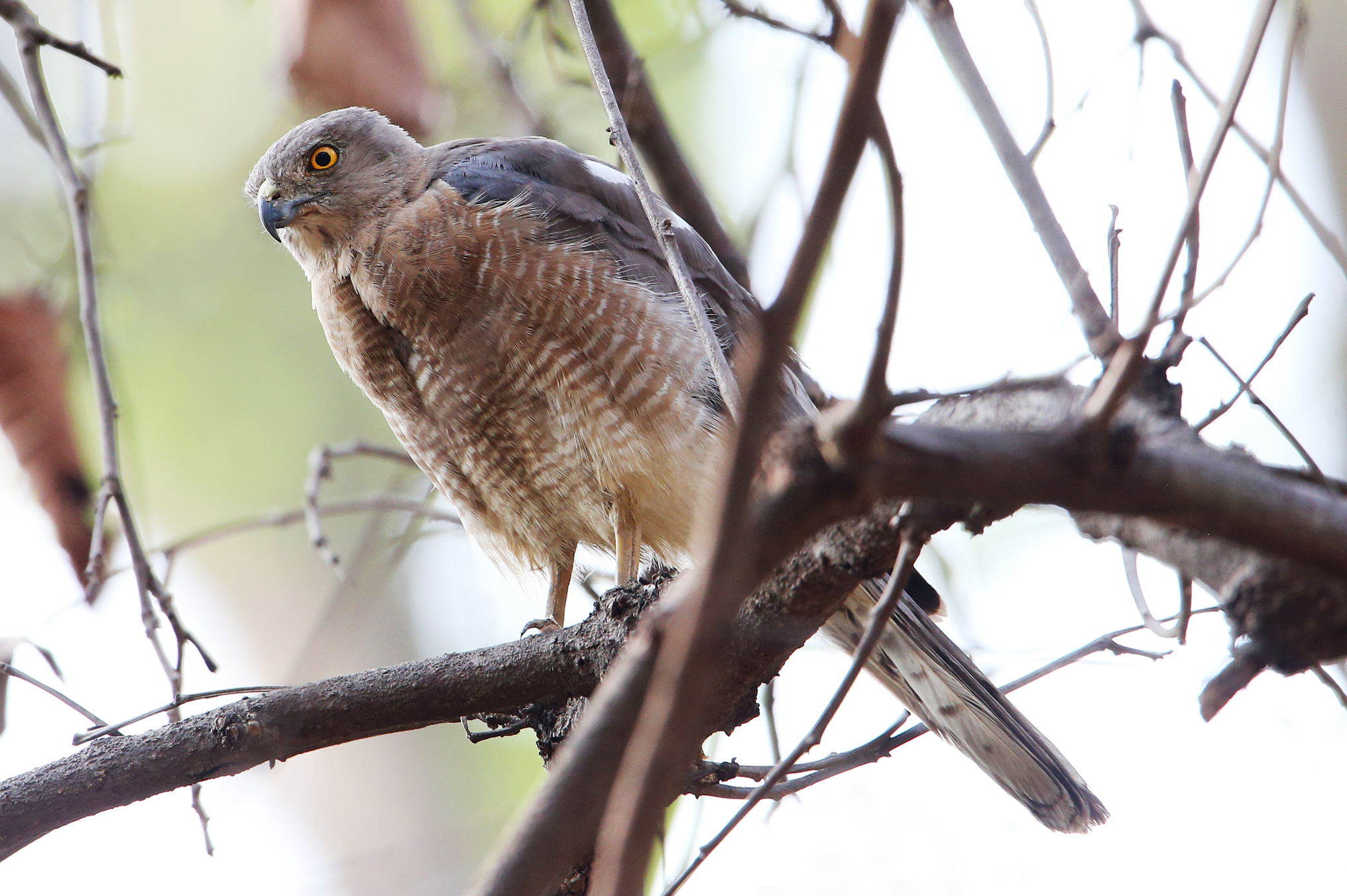
Shikra
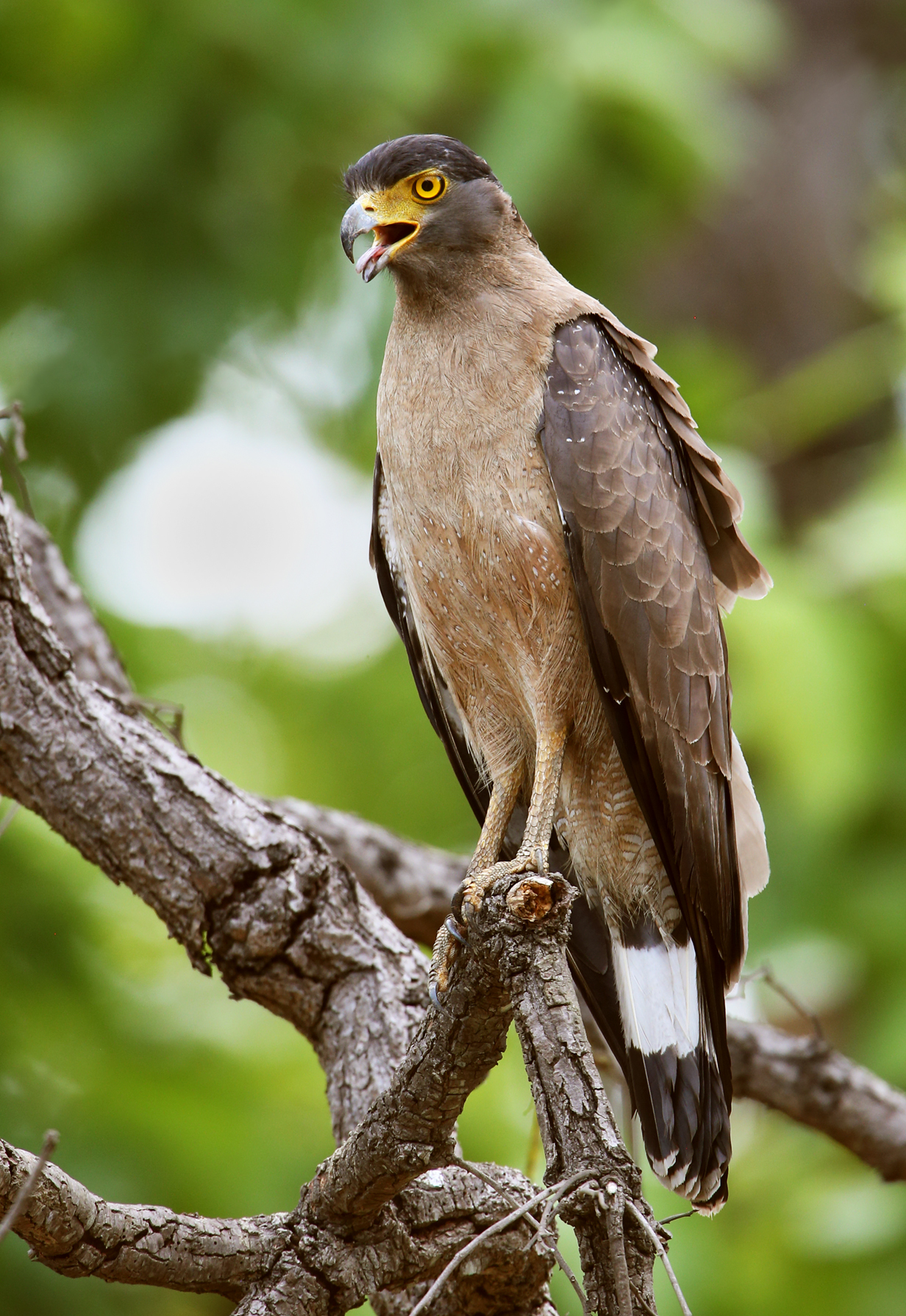
Crested serpent eagle
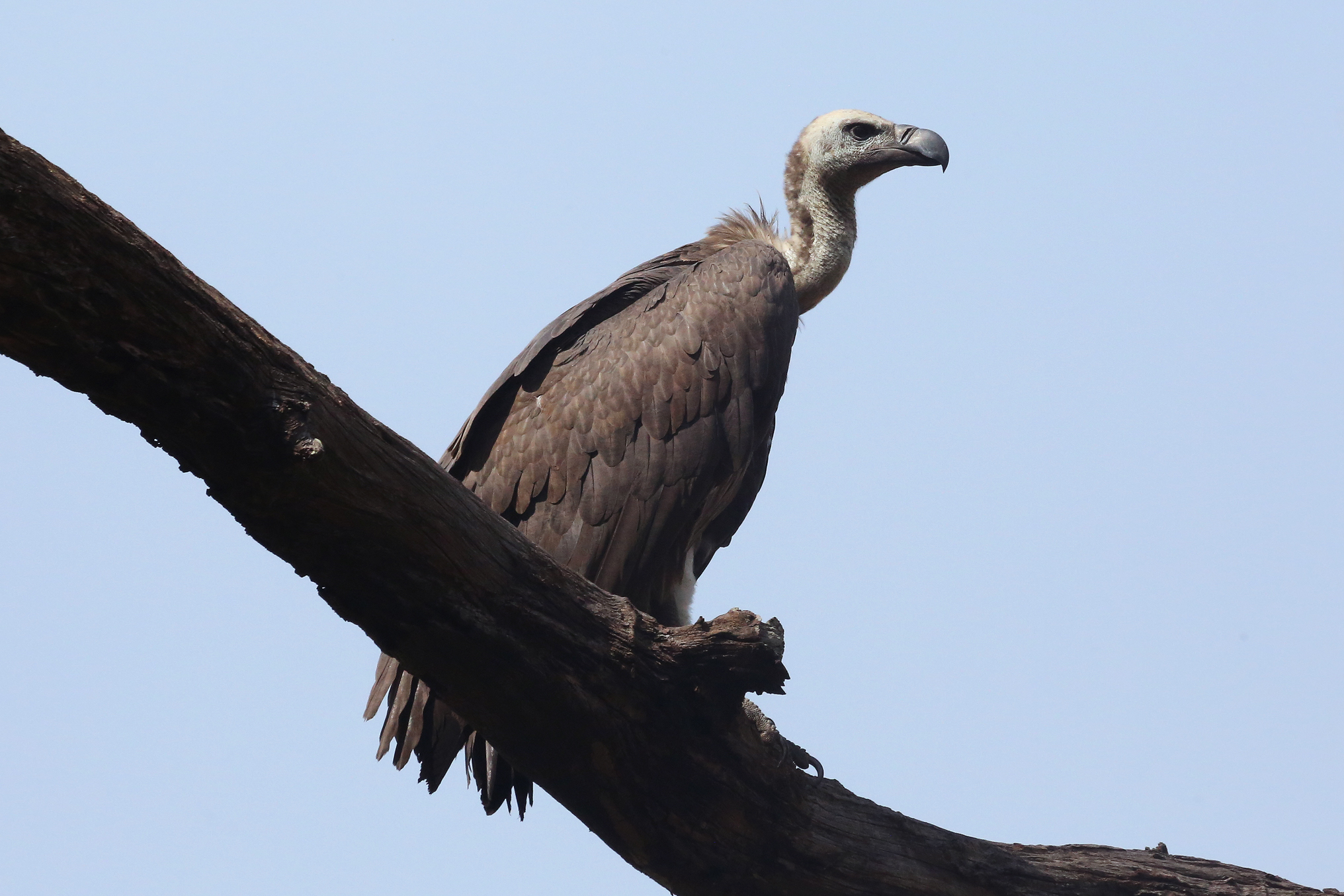
Long-billed vulture (Again, the fact that vultures are doing well in Kanha National Park whereas they are doing badly almost everywhere else in India is a sign that this is a healthy ecosystem. This is not our life bird, probably, but we got our life bird moments before.)

Red-headed vulture


Southern Greater coucal (Centropus sinensis parroti - Three birds put on a marvellous call display)

White-throated (Smyrna) kingfisher
Our bird pictures from around the world follow standard ecozones approximately but not exactly:
Birds from the USA and Canada: our house, Hornsby Bend and greater Austin, Texas, California, Hawaii, Canada,
Neotropic birds from Central America and the Caribbean: Honduras, Costa Rica, Panama, Trinidad and Tobago
Neotropic birds from South America: Ecuador, Ecuador 2017, Brazil.
Western palearctic birds: Europe: Germany, Finland, Norway, Europe: United Kingdom, Europe: Spain, the Canary Islands, Europe: Lesbos, Greece, Israel
Eastern palearctic birds: China
Birds from Africa: The Gambia, South Africa
Indo-Malayan birds from India: North-west (Delhi, Uttar Pradesh, Uttarakhand) India: North-east (Assam, Arunachal Pradesh, Meghalaya) India: Central (Maharashtra, Madhya Pradesh)
Birds from Australia, New Zealand.
For our 2014 December trip to India, see this travelog.
For our 2016 May-June trip to India, see this travelog.
For our 2017 April trip to High Island, Texas, see this web site.
For our 2018 March trip to India, see this travelog.
For our 2018 May trip to China, see this travelog.
For our 2018 November trip to China, see this travelog.
For our 2019 April trip to High Island, Texas, see this web site.
For our 2019 July trip to China, see this web site.
For our 2021 April trip to High Island, Texas, see this web site.
For our 2021 December trip to Ecuador, see this web site.
For our 2022 January trip to Peru, see this web site.
For our 2022 July-August trip to Australia and Papua New Guinea, see this web site.
For our 2022 September trip to Bolivia, see this web site.
For our 2022 November-December pre-trip to Argentina (before our Antarctic cruise), see this web site.
For our 2022 November-December cruise to Antarctica, see this web site.
For our 2023 January birding in Chile, see this web site.
For our 2023 January-March cruise from Chile to Antarctica and around South America to Miami, FL, see this web site.
For our 2023 March-April birding in south Florida (after the Seabourn cruise), see this web site.
For our 2023 November-December birding to Sri Lanka, the Andaman Islands, and South India, see this web site.
For John's 2024 February-March birding in Colombia, see this web site.
For our 2024 May-June cruise from Iceland to Jan Mayen Island to and around the Svalbard Archipelago, see this web site.
For our 2024 June 25-30 stay in Paris, see this web site.
For our 2025 April 21 - May 3 trip to High Island, Texas, see this web site.